Key takeaways:
- Equal pay advocacy is essential for promoting fairness in the workplace and challenging cultural norms that contribute to wage disparities.
- Effective strategies include knowing your audience, building coalitions, and using personal storytelling to connect emotionally and drive the message home.
- Social media can amplify advocacy efforts through strategic use of hashtags and emotional narratives, creating broader engagement and connections.
- Listening to diverse perspectives and showing persistence in overcoming challenges are crucial for strengthening advocacy efforts and fostering meaningful change.
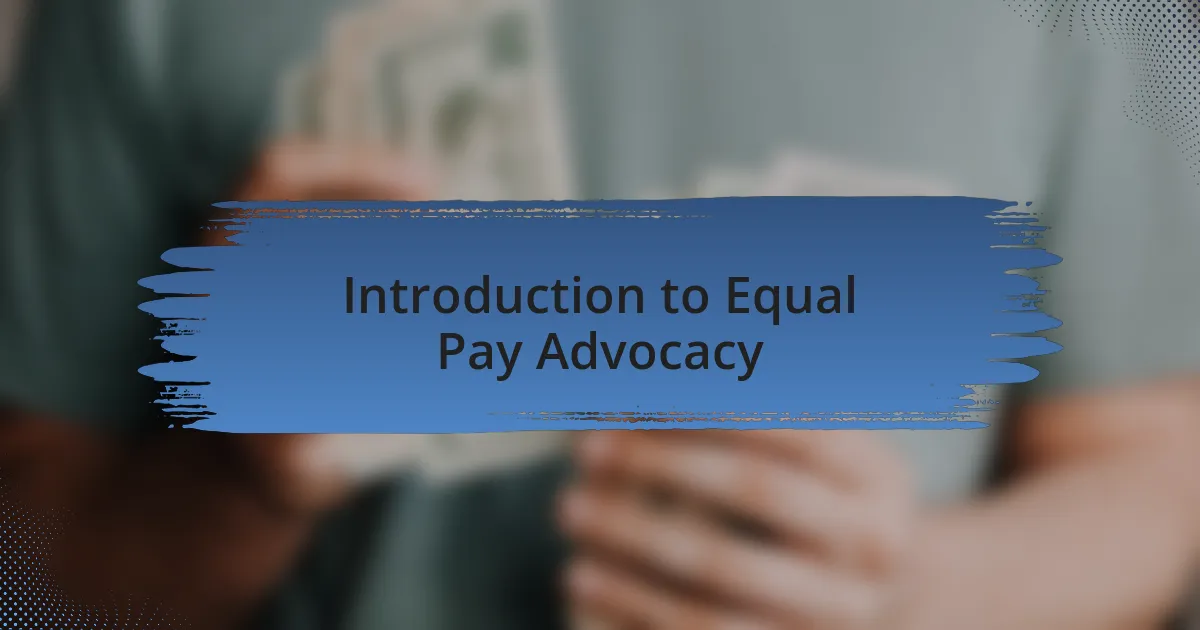
Introduction to Equal Pay Advocacy
Equal pay advocacy is more than just a movement; it’s a necessity for a fair and just society. When I think back to my early career days, I often reflect on moments when I felt undervalued compared to my male counterparts. Hasn’t everyone, at some point, felt the sting of injustice in the workplace?
This advocacy aims not only to close the wage gap but to challenge the cultural norms that perpetuate it. I remember a conversation I had with a friend who was hesitant to discuss her salary during negotiations. Why do we shy away from these conversations? It seems that fear of judgment can often silence important discussions about our worth.
As we delve deeper into equal pay advocacy, we must acknowledge that it’s an ongoing struggle. I’ve witnessed firsthand the power of grassroots movements rallying for change, and it leaves me optimistic. How can we inspire others to join us in this fight for equality? Together, through compassion and understanding, we can create a more equitable workplace for everyone.
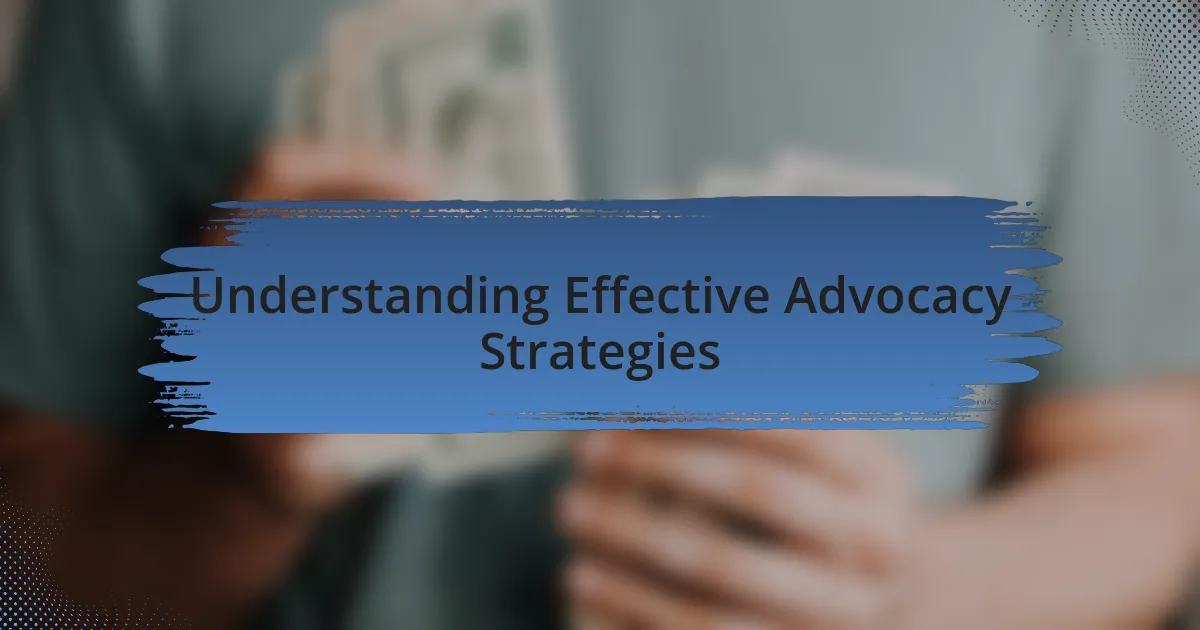
Understanding Effective Advocacy Strategies
Understanding effective advocacy strategies begins with knowing your audience. When I first started advocating for equal pay, I realized that tailoring my message to resonate with different groups was key. Have you ever tried to persuade someone who simply doesn’t see your perspective? It can be incredibly frustrating, yet understanding their concerns allows for more productive conversations.
Another important strategy involves building coalitions. I remember attending a local conference where various organizations came together to share their goals. The energy in the room was palpable, and it reinforced how much stronger we are when we unite for a common purpose. Do you think a single voice can create as much ripples as a choir? I’ve learned that collaboration amplifies our message and fosters a sense of community around the cause.
Lastly, I find that storytelling is a powerful tool in advocacy. Sharing personal experiences can humanize data and statistics, making them relatable. For example, I once recounted my own experience of negotiating a raise, revealing the internal struggles I faced. Can a story influence change? Absolutely. It invites empathy and encourages others to reflect on their own experiences, driving home the urgency of our mission for equal pay.
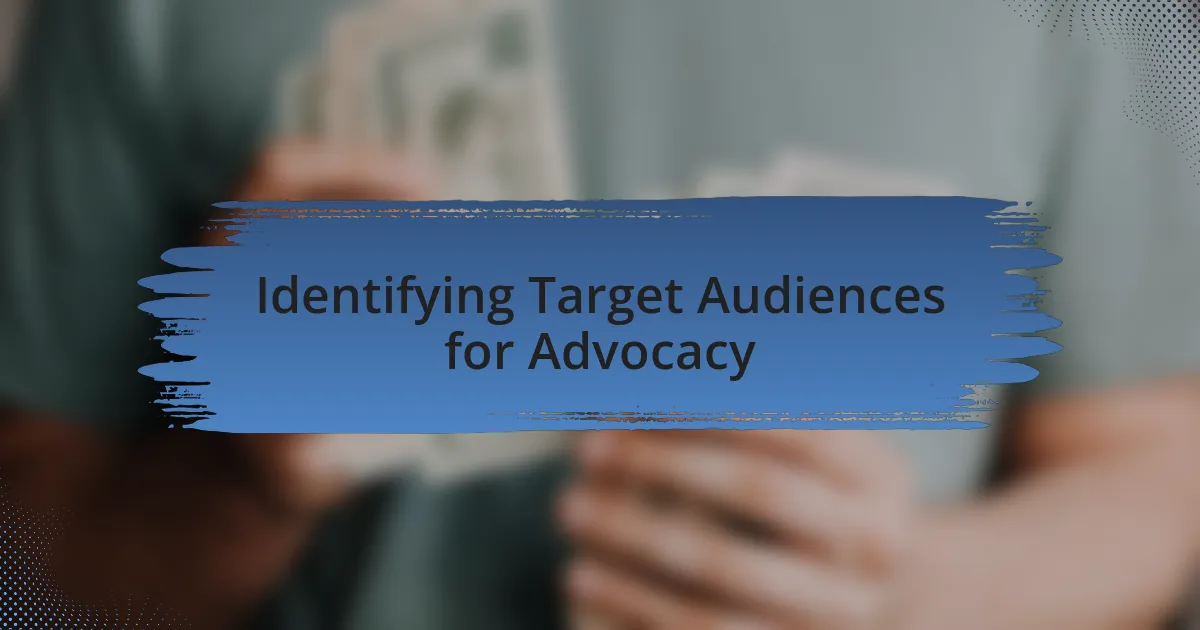
Identifying Target Audiences for Advocacy
Identifying target audiences is crucial in effective advocacy. When I first approached gender pay equity initiatives, I found that the corporate world had distinct interest groups. Engaging with HR professionals, for instance, provided insights into policies that could directly impact equal pay efforts. Have you ever considered how different stakeholders might perceive your message? Understanding their motivations helped me craft arguments that resonated with their specific concerns.
It’s also vital to recognize the role of demographic factors. I remember speaking to a group of young professionals who were just starting their careers. They were passionate but often unaware of systemic issues surrounding pay inequality. By tailoring my approach to their level of awareness and priorities, I could connect more deeply. How can we reach those who are new to the conversation? Focusing on practical implications, like how pay disparities affect long-term career growth, sparked their interest and encouraged them to become advocates themselves.
Moreover, don’t overlook the importance of identifying allies among unlikely groups. I once engaged with a male colleague who initially seemed indifferent to the topic of equal pay. However, when I framed the conversation around fairness and team performance, he became an enthusiastic supporter. It was a great reminder that advocacy can transcend traditional boundaries. Who else might share our vision if we simply present our case in a different light? Through these interactions, I’ve learned that broadening our audience can yield unexpected partnerships that strengthen our advocacy efforts.
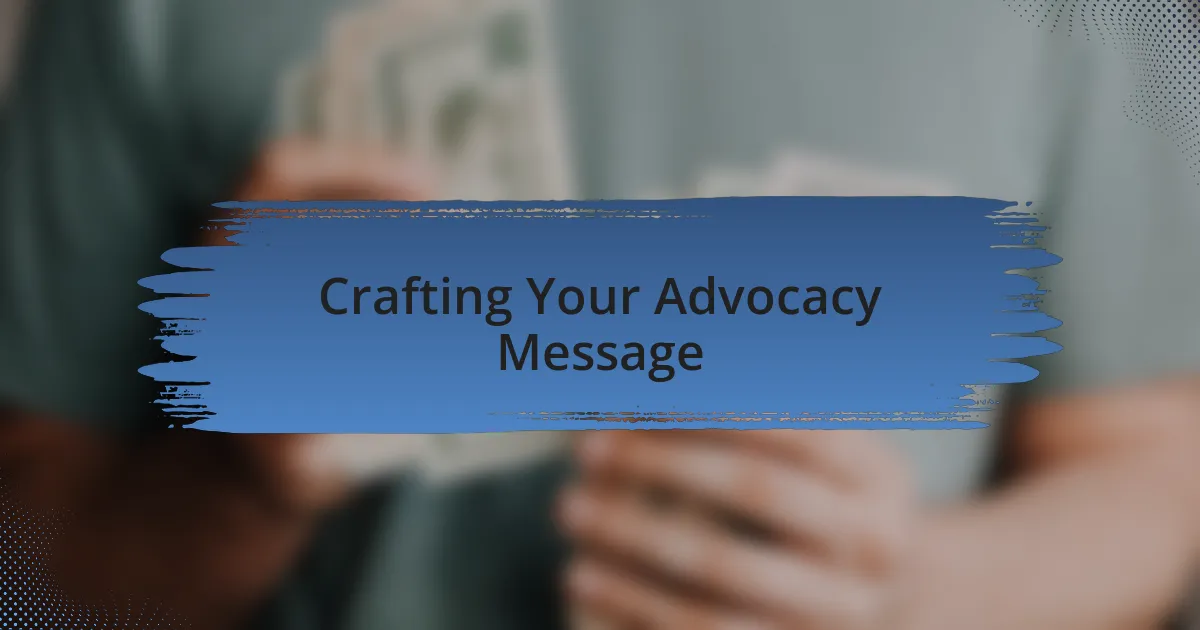
Crafting Your Advocacy Message
Crafting your advocacy message starts with a clear understanding of your core values. I remember when I first outlined my message on equal pay; it was a mix of personal experiences and statistical evidence. At that moment, I realized that blending storytelling with data made my message not just informative but compelling. Have you ever shared a personal story that resonated with your audience? Those anecdotes can create emotional connections, making your audience more receptive to your message.
Next, consider the language you use. I found that simplifying complex ideas without losing their essence is crucial. For example, instead of just stating that “gender pay gap statistics are alarming,” I turned it into a relatable statement: “Imagine working your whole life and still earning less than a male colleague for the same job.” This shift in language made the issue tangible. How can your wording invite your audience to feel the weight of the conversation? Think about phrases that stir emotions and highlight common goals; that’s where real advocacy begins.
Lastly, never underestimate the power of a strong call to action. I once ended a presentation on equal pay by asking my audience to write one email advocating for policy change. That simple action transformed passive listeners into proactive advocates. Have you considered what specific action you want your audience to take? Designing your message around actionable steps not only empowers your audience but also reinforces the urgency of the cause. Let’s inspire change together, one message at a time.
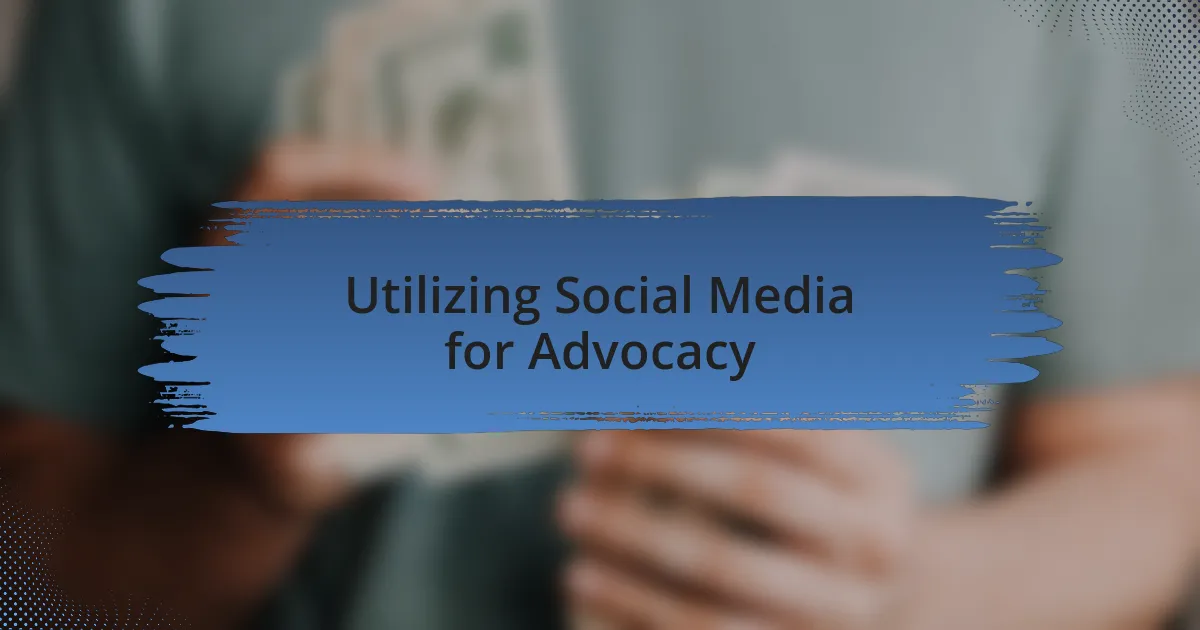
Utilizing Social Media for Advocacy
Harnessing the power of social media can significantly amplify your advocacy efforts. I remember when I first shared my thoughts on equal pay on Twitter; the response was immediate and overwhelming. It made me realize that social platforms are not just for personal updates—they’re vibrant spaces for discussions, mobilization, and community building. How have your social media posts made you feel connected to a broader cause?
When I started using hashtags strategically, such as #EqualPay and #PayEquity, I saw my reach expand far beyond my immediate network. These little digital flags can attract like-minded individuals, creating a sense of solidarity. It was fascinating to watch conversations grow around my posts, showing that every voice matters. Are you leveraging hashtags effectively in your advocacy?
Emotional storytelling on social media is another powerful tool. I recall sharing a short video about a close friend’s struggle with pay disparity that resonated deeply with viewers, sparking conversations that carried into offline spaces. It’s incredible how a personal narrative can not only inform but also inspire your audience to join in advocating for change. Could your story be the catalyst for someone else’s journey into activism? The potential impact of our voices on social media is truly limitless.

Personal Reflections on Effective Advocacy
Effective advocacy often requires us to step out of our comfort zones. I vividly remember the first time I spoke at a community forum about wage gaps—my hands were shaky, but my passion fueled me. It hit me that sharing my perspective not only empowered me but also inspired others in the audience to voice their own experiences. Have you ever felt that rush when you connect your story to a larger narrative?
Listening is an often overlooked but vital part of advocacy. In my journey, I’ve made it a priority to engage with diverse voices and perspectives, especially those directly affected by pay inequalities. One particularly impactful conversation with a colleague opened my eyes to the nuances of gender and race in salary discussions. It reminded me that advocacy isn’t just about conveying my views—it’s about understanding and amplifying others’ experiences. How often do you create space for others to share their insights?
Finally, I’ve learned that persistence is key. I recall facing numerous setbacks when organizing advocacy campaigns, but each challenge taught me resilience. For instance, when a meeting didn’t go as planned, I took it as an opportunity to reflect and refine my approach. How do you bounce back from obstacles in your advocacy efforts? Each setback can be a stepping stone toward more effective strategies and, ultimately, meaningful change.